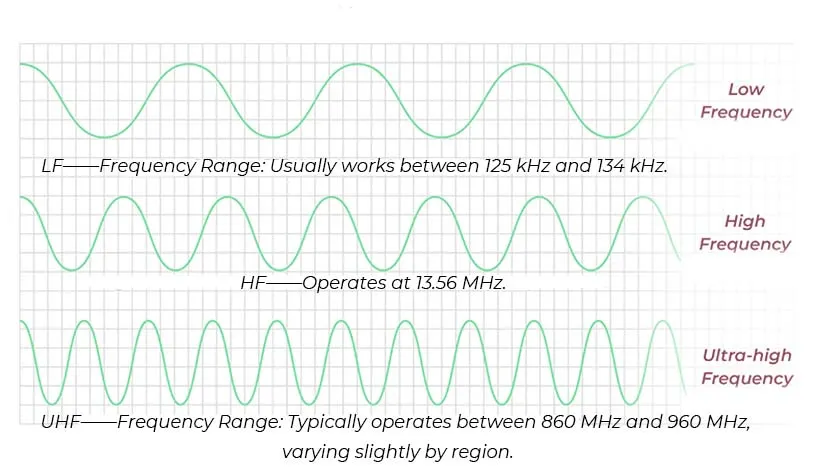This post delves into RFID (Radio-Frequency Identification) technology, highlighting its revolutionary impact on various industries. It explains the fundamental types of RFID tags—active, passive, and semi-passive—along with their unique features and functionalities. The article emphasizes the advantages of RFID, such as enhanced inventory management, improved accuracy in tracking assets, and increased efficiency in operations. By exploring the diverse applications of RFID technology, the post showcases its potential to streamline processes and drive innovation across sectors, making it a crucial tool for modern businesses.
Tag Archives: radio frequency identification
This post provides a comprehensive overview of RFID (Radio Frequency Identification) frequencies, detailing their distinct characteristics and practical applications. It highlights the advantages of different frequency ranges, such as low, high, and ultra-high frequencies, and how these affect read ranges, data transfer rates, and environmental adaptability. The article also underscores the technological advancements that enhance RFID efficiency and reliability, making it a vital tool in various sectors, including logistics, retail, and healthcare. Overall, it emphasizes RFID’s transformative potential in streamlining operations and improving inventory management.
This post delves into the significance of Auto-ID technology, specifically focusing on RFID (Radio Frequency Identification) as a cornerstone of modern automation. It highlights RFID’s pivotal features, such as its ability to enhance inventory management and streamline supply chain processes. The advantages of RFID include increased accuracy, real-time data tracking, and improved operational efficiency. Additionally, the article emphasizes RFID’s distinctive qualities, like contactless scanning and the capacity to read multiple tags simultaneously, making it an essential tool in various industries. Overall, the post illustrates how RFID technology is transforming automation, driving innovation, and enhancing productivity in today’s fast-paced environment.
This post explores the diverse range of RFID readers, detailing their operational distances and capabilities. It highlights key features such as frequency types (low, high, and ultra-high frequency), read ranges, and form factors. The advantages of RFID technology, including efficiency in inventory management and real-time tracking, are emphasized. Readers will also discover the unique qualities of various RFID readers, showcasing their applications across industries from retail to logistics. The article ultimately aims to provide a comprehensive understanding of how different RFID readers can enhance operational efficiency and improve asset management.




